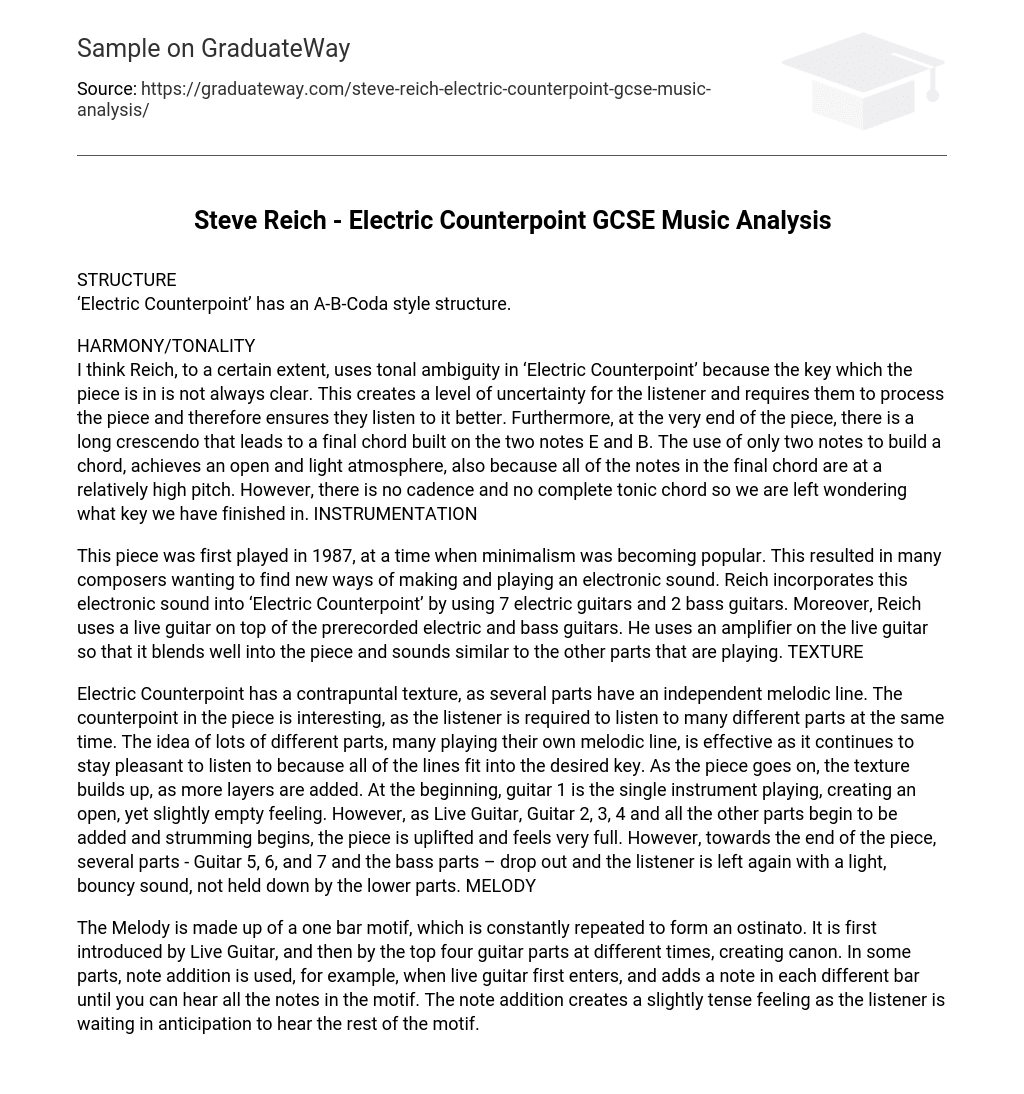STRUCTURE
‘Electric Counterpoint’ has an A-B-Coda style structure.
HARMONY/TONALITY
I think Reich, to a certain extent, uses tonal ambiguity in ‘Electric Counterpoint’ because the key which the piece is in is not always clear. This creates a level of uncertainty for the listener and requires them to process the piece and therefore ensures they listen to it better. Furthermore, at the very end of the piece, there is a long crescendo that leads to a final chord built on the two notes E and B. The use of only two notes to build a chord, achieves an open and light atmosphere, also because all of the notes in the final chord are at a relatively high pitch. However, there is no cadence and no complete tonic chord so we are left wondering what key we have finished in.
INSTRUMENTATION
This piece was first played in 1987, at a time when minimalism was becoming popular. This resulted in many composers wanting to find new ways of making and playing an electronic sound. Reich incorporates this electronic sound into ‘Electric Counterpoint’ by using 7 electric guitars and 2 bass guitars. Moreover, Reich uses a live guitar on top of the prerecorded electric and bass guitars. He uses an amplifier on the live guitar so that it blends well into the piece and sounds similar to the other parts that are playing.
TEXTURE
Electric Counterpoint has a contrapuntal texture, as several parts have an independent melodic line. The counterpoint in the piece is interesting, as the listener is required to listen to many different parts at the same time. The idea of lots of different parts, many playing their own melodic line, is effective as it continues to stay pleasant to listen to because all of the lines fit into the desired key.
As the piece goes on, the texture builds up, as more layers are added. At the beginning, guitar 1 is the single instrument playing, creating an open, yet slightly empty feeling. However, as Live Guitar, Guitar 2, 3, 4 and all the other parts begin to be added and strumming begins, the piece is uplifted and feels very full. However, towards the end of the piece, several parts – Guitar 5, 6, and 7 and the bass parts – drop out and the listener is left again with a light, bouncy sound, not held down by the lower parts.
MELODY
The Melody is made up of a one bar motif, which is constantly repeated to form an ostinato. It is first introduced by Live Guitar, and then by the top four guitar parts at different times, creating canon. In some parts, note addition is used, for example, when live guitar first enters, and adds a note in each different bar until you can hear all the notes in the motif. The note addition creates a slightly tense feeling as the listener is waiting in anticipation to hear the rest of the motif.





